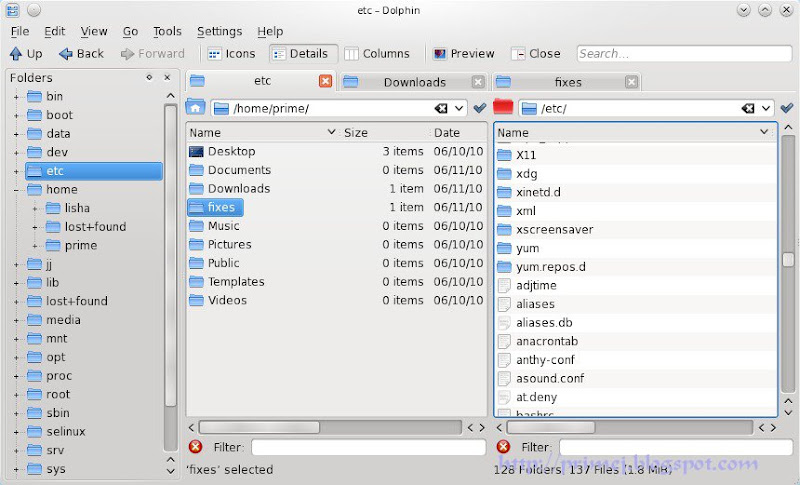I've been using Redhat Linux/Fedora for almost a decade and every release was getting better than the previous one. So when Fedora 13 came out last month, I decided to see how things are and it turned out to be good.
Before installing in my primary desktop machine, I tested the installation in VirtualBox environment. When I saw that things were working fine, I started installing in the desktop machine. The most time consuming activity was making sure that I have backed up all the data. I decided to go with a fresh installation instead of upgrade.
The installation process was uneventful except for one thing - the installer was taking long time to identify the storage devices. The installer was proceeding after a waiting for couple of minutes but I wanted to make sure that things are fine. While searching the Fedora forums for a solution, I found the problem report and the solution. The installer was waiting for the response from the non-existent floppy drive and was timing out. Disabling the Floppy Controller from the BIOS resolved the it and installation completed without problems.
The boot up was pretty fast, and got into the KDE desktop without much delays. The wireless network card was working out of box. In the earlier releases, I had to install the drivers manually. Things are really getting better!
The built-in Intel graphics card the 3D desktop effects were working fine. Here is a screen shot of a 3D effect for my friends who are not using Fedora:

The Dolphin File manager is a good example of how refined Fedora is. In the snapshot, you can see the multiple tabs and the split view. No more scrambling around while copying files from one folder to another using file managers. Pop in an audio CD, the Dolphin file manager will show up a set of folders that contains tracks encoded in different formats including MP3 and FLAC.

It took a while to put the data back and set up the system, but it was worth the effort.
Before installing in my primary desktop machine, I tested the installation in VirtualBox environment. When I saw that things were working fine, I started installing in the desktop machine. The most time consuming activity was making sure that I have backed up all the data. I decided to go with a fresh installation instead of upgrade.
The installation process was uneventful except for one thing - the installer was taking long time to identify the storage devices. The installer was proceeding after a waiting for couple of minutes but I wanted to make sure that things are fine. While searching the Fedora forums for a solution, I found the problem report and the solution. The installer was waiting for the response from the non-existent floppy drive and was timing out. Disabling the Floppy Controller from the BIOS resolved the it and installation completed without problems.
The boot up was pretty fast, and got into the KDE desktop without much delays. The wireless network card was working out of box. In the earlier releases, I had to install the drivers manually. Things are really getting better!
The built-in Intel graphics card the 3D desktop effects were working fine. Here is a screen shot of a 3D effect for my friends who are not using Fedora:

The Dolphin File manager is a good example of how refined Fedora is. In the snapshot, you can see the multiple tabs and the split view. No more scrambling around while copying files from one folder to another using file managers. Pop in an audio CD, the Dolphin file manager will show up a set of folders that contains tracks encoded in different formats including MP3 and FLAC.

It took a while to put the data back and set up the system, but it was worth the effort.
No comments:
Post a Comment